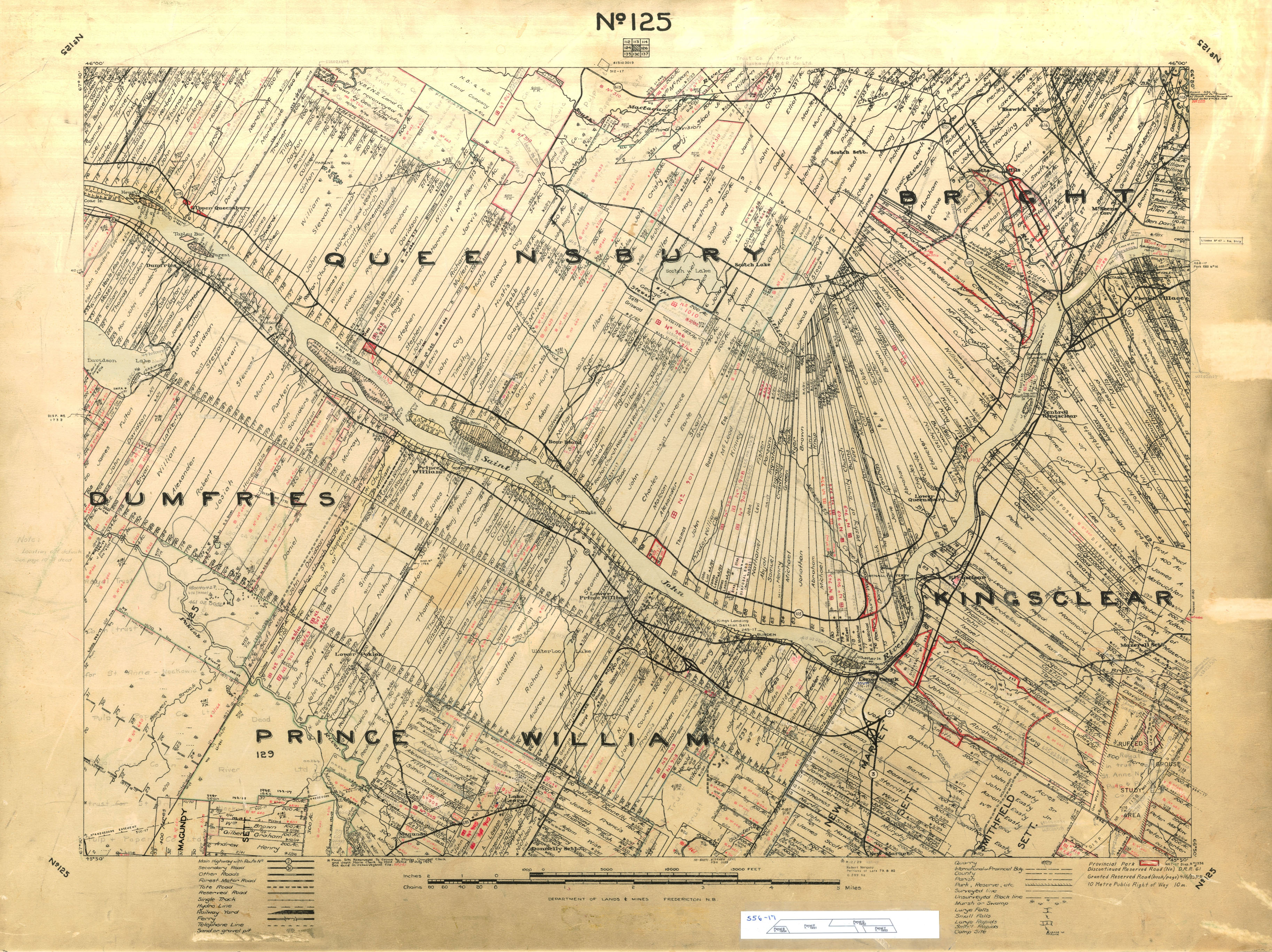- Submitted on
- 4 comments
To further our blog post from last week on the “Lost Loyalists” of York County, New Brunswick, we wanted to walk you through the research process and variety of sources used for this biographical project. Most sources were accessible from within the Harriet Irving Library in either microfilm, print or electronic form. The basic research guide we followed gave the student assistants working on the project a starting point, which lead them to invaluable research experience.

Student Research Assistant, Lilian Taylor at work transcribing. (Photograph courtesy of Patricia Simmons)
Firstly, we decided to include the area within the modern boundaries of York County which encompassed the parishes of Kingsclear, Fredericton, Prince William, St. Mary’s, Douglas, Queensbury, and Southampton. The original York County was much larger than the present version, comprising even the District of Madawaska at the New Brunswick-Quebec border.
The starting point of the project began with the index of loyalists in the appendix of Esther Clark Wright’s seminal work, Loyalists of New Brunswick. A comprehensive list of those considered loyalists who would have lived or sojourned in York County was then compiled. This list was further investigated for persons whose names generated research “leads”. An attempt was made to choose individuals from a variety of backgrounds, while also allowing each researcher to choose individuals who caught their interest.
Essential reference books from The Loyalist Collection.
As with most historical research, secondary sources were our starting point: general books on loyalists, the American Revolution, and New Brunswick history (with special attention given to footnotes) were initially consulted. Some of the key loyalist nominal indexes and biographies we rely upon for researching loyalists include: Biographical Sketches of Loyalists of the American Revolution by Gregory Palmer; Biographical Sketches of Loyalists of the American Revolution, With an Historical Essay by Lorenzo Sabine (two different monographs, Sabine’s work is available at archive.org); Early Loyalist Saint John: The Origin of New Brunswick Politics, 1783-1786 and American Loyalists to New Brunswick: The Ship Passenger Lists by David Bell; King’s Loyal Americans: The Canadian Fact by B. Wood-Holt; Loyalists in the Southern Campaign of the Revolutionary War by Murtie June Clark; Loyalist Families by Cleadie B. Barnett and Elizabeth S. Sewell; Military Loyalists of the American Revolution: Officers and Regiments, 1775-1783 by Walter T. Dornfest; and New Brunswick Loyalists: A Bicentennial Tribute by Sharon Dubeau. Of course, this is merely a sampling of the most common monographs consulted; many more works particular to groups of loyalists or loyalists from certain states were also very useful for this project.
Additionally, we checked significant works on New Brunswickers and New Brunswick in general which were instrumental in reconstructing biographies of loyalists, such as Pioneer Profiles of New Brunswick Settlers by Charlotte Gourlay Robinson; The New Brunswick Militia: 1787-1867 by David R. Facey-Crowther; and An Outline of the History of Central New Brunswick to the Time of Confederation by L.M.B. Maxwell.
Online resources, when used with a critical eye toward reliability, offer a plethora of research opportunities literally at the fingertips. Particularly, the Provincial Archives of New Brunswick databases Newspaper Vital Statistics; Records of Old Revolutionary Soldiers and their Widows; Land Petitions: Original Series, 1783-1918; and New Brunswick Land Grants, 1784-1997 were extremely useful in this project. Also, important online biographical sources included the Loyalist Directory of the UELAC (United Empire Loyalists Association of Canada), the Dictionary of Canadian Biography, Dictionary of National Biography (British), and Dictionary of American Biography.
Annabelle Babineau researching loyalist Claims in the British Audit Office records. (Photograph by Bethany Langmaid)
After an orientation and choice of direction through secondary and online resources, researchers moved on to primary sources, particularly those found in The Loyalist Collection, in the quest to fill out the lives of their subjects. Loyalist claims were an excellent starting point; these memorials were made after the war requesting compensation for losses sustained by individuals because of their loyalty to the British Crown. Several books are available which summarise and index the claims which are part of Great Britain’s Audit Office 12 and Audit Office 13 records and made short work of locating the subjects: American Loyalist Claims by Peter Wilson Coldham and Sally Lou Mick Haigh; American Migrations, 1765-1799 by Peter Wilson Coldham; and United Empire Loyalists: Enquiry Into the Losses and Services in Consequence of their Loyalty by Alexander Fraser.
Many loyalists were involved with the military during the war and after resettlement in the local militia. If particular regiments could be located in The Loyalist Collection records, those documents were searched for muster rolls, discharge papers, and other useful papers. Alternately, names were searched in the in the Index to British Military and Naval Records; Ward Chipman Muster Rolls or Carleton’s Loyalist Index. The On-Line Institute for Advanced Loyalist Studies was also a valuable resource for military individuals.

Cadastral map of a portion York County including the original parishes of Queensbury, Prince William, and Kingsclear.
(Image courtesy of the Provincial Archives of New Brunswick)
Finally, mainstays in primary biographical research, church records and land records were used frequently in the York County Loyalist Project. Church records were often employed to flesh out biographies with baptismal, marriage, death, and church membership documents. Land records such as grants and deeds provided very useful details beyond land ownership and where people lived, as petitions often contain background to memorialists’ life, family, and experiences.
The project grew into a valuable exercise to connect students with people of the past who became familiar friends to the researchers, with the loyalists’ vivid personalities and exceptional experiences emerging from some basic and readily accessible documents.
Please look out for Unwritten History’s upcoming post on Tuesday, March 21st which will feature an annotated bibliography of online sources for loyalists.
Leah Grandy holds a PhD in History and works as a Microforms Assistant at the Harriet Irving Library. Christine Jack, Manager of Microforms, was instrumental in creating the research process and generating a list of sources for this project.

Comments Add comment
Sinclair Loyalist
Sinclairs
Thank you for your comment. We have completed ten biographies of loyalist in York County to date, but no Sinclairs unfortunately. There is potentially information within The Loyalist Collection on the Sinclairs, which is open for use by any researchers.
looking for relatives
Looking for loyalist ancestors
Hello, we would suggest you start by looking at the Loyalist Directory on the United Empire Loyalists Association of Canada's website: http://www.uelac.org/Loyalist-Info/Loyalist-Info.php. The next step would be to narrow down where your ancestor was from, and if they migrated after the American Revolution. Hope that helps!
Add new comment Comments